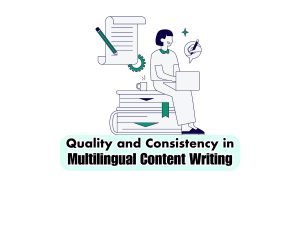
Strategies for Growing Organic Traffic to Your Website
In the competitive landscape of online business, driving organic traffic to your website is essential for increasing brand visibility, attracting potential customers, and ultimately, achieving
Technical writing requires precision, clarity, and accuracy to communicate complex concepts and instructions effectively. Editing and proofreading play crucial roles in refining technical documents to fulfill this purpose. Inaccurate or ambiguous communication in technical documents can lead to misunderstandings and costly errors. In this article, we explore the importance of editing and proofreading in technical writing and share effective strategies to ensure consistency and accuracy.
While editing and proofreading are often used interchangeably, they serve distinct purposes in the process of refining technical content.
* Editing involves examining the structure, clarity, and coherence of a document to improve readability and strengthen the message. Editing focuses on sentence formation, logical connections, consistency, and adherence to a style guide or template.
* Proofreading is a final review of a document to catch spelling, grammar, punctuation, and formatting errors. The process ensures the removal of any lingering issues before the document is sent for publication or distribution.
Together, editing and proofreading play a crucial role in maintaining the quality and professionalism of technical writing.
Experienced technical writers use these strategies to improve the quality of their documents in the editing process:
1. Assess document structure: Ensure that headlines, sub-headlines, bullet points, and numbered lists are used effectively to break up lengthy paragraphs and improve readability.
2. Enforce consistency: Maintain consistency in terminology, abbreviations, and formatting throughout the document. Use a style guide or establish a set of guidelines to adhere to.
3. Clarify complex sentences: Revise long, convoluted sentences to be concise and straightforward, ensuring the information is accessible to the target audience.
4. Avoid jargon and unnecessary technical terms: Whenever possible, replace industry-specific terms with simpler words, or provide clear explanations or a glossary to define terms.
5. Seek input from domain experts: Domain experts can help identify areas where the content may be unclear or where technical inaccuracies need correction.
In addition to editing, proofreading helps finalize technical documents and eliminate any lingering errors:
1. Take a break before proofreading: Stepping away from the document before starting the proofreading process can help identify errors with a fresh perspective.
2. Read the document aloud: By reading the content aloud, you can spot awkward phrasings, repetitive words, and other inconsistencies more easily.
3. Use spellcheck and grammar tools: While they may not catch every error, tools like Grammarly, Hemingway Editor, or Microsoft Word’s Spellcheck can help identify many spelling and grammatical issues.
4. Proofread multiple times: Multiple rounds of proofreading can increase the likelihood of catching errors that may have been overlooked in the previous review.
5. Ask a peer to review: A second pair of eyes can provide valuable insights and spot errors not noticed in the initial proofreading sessions.
Editing and proofreading are essential components of technical writing, ensuring consistency and accuracy while increasing the overall quality of the document. By incorporating these strategies into the technical writing process, writers can enhance their final product, communicate effectively to their target audience, and reduce the risk of misunderstandings. As a result, companies will benefit from well-structured, clear, and precise technical documents that effectively convey essential information and instructions.

In the competitive landscape of online business, driving organic traffic to your website is essential for increasing brand visibility, attracting potential customers, and ultimately, achieving

In today’s globalized world, businesses are increasingly expanding their reach to international markets, necessitating the creation of multilingual content to effectively communicate with diverse audiences.





“LeadsView did an excellent job with my project and will definitely recommend. Easy to work with, flexible and good quality of work. I am more than happy to recommend them."




















Copyright 2023 © LeadsView. All Rights Reserved
